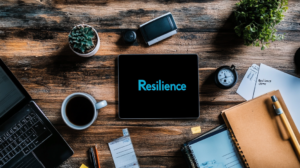Workplace injuries can occur unexpectedly. As an employer, understanding your responsibilities is crucial not only for compliance with regulations but also for ensuring the well-being of your workforce. Handling injuries isn’t just a legal obligation—it’s a critical responsibility that defines an organisation’s commitment to its employees’ well-being. As someone with expertise in workplace safety, I’ve understood that how employers respond to workplace injuries profoundly impacts the injured employee and the overall workplace environment.
Learning the H&S leadership and management level is crucial for effectively managing workplace injuries. This allows leaders to ensure compliance with regulations and proactively identify and mitigate risks before they escalate. This level of knowledge empowers leaders to foster a culture where safety is ingrained into every aspect of the organisation, from the boardroom to the shop floor, creating a workplace environment where employees and the business thrive in safety and productivity.
Here’s a comprehensive guide to navigating employer responsibilities when handling workplace injuries.
1. Prevention is Key
Preventing workplace injuries should always be the priority. Conduct regular safety inspections, provide necessary training on safety protocols, and ensure all equipment and machinery are in optimal working condition. The Health and Safety Executive (HSE) in the United Kingdom is important in enforcing health and safety regulations across various industries. Employers must adhere to HSE guidelines, including implementing effective risk assessment strategies, providing adequate employee training, and maintaining a safe working environment to prevent accidents and injuries. Encouraging a safety-conscious culture among employees can significantly reduce the risk of accidents.
2. Immediate Response
When an injury occurs, prompt action is essential. Ensure that designated individuals trained in first aid can provide immediate assistance. The injured employee should receive medical attention promptly, either through on-site first aid or by seeking professional medical help if necessary.
3. Reporting and Documentation
Employers are required to maintain detailed records of workplace injuries and illnesses. This includes documenting the incident, the injured employee’s information, the nature of the injury, and any treatment provided. Reporting requirements vary by jurisdiction, so familiarising yourself with local regulations is crucial.
4. Worker’s Compensation
Most jurisdictions mandate that employers provide worker’s compensation insurance, which covers medical expenses and lost wages for injured employees. Understanding the specific requirements and procedures for filing a worker’s compensation claim is essential to ensure that the injured employee receives appropriate benefits.
5. Communication and Support
Open communication is vital throughout the process. Keep the injured employee informed about their rights, the status of their claim, and any available support services. Demonstrating empathy and support can help maintain employee morale and trust in the organization during challenging times.
6. Review and Prevention Strategies
After any workplace injury, conduct a thorough review to identify root causes and implement preventive measures. Engage employees in this process to gather insights and improve safety protocols continuously. Regularly update your safety policies based on lessons learned from incidents.
7. Legal Compliance
Ensure that your workplace injury procedures comply with all relevant laws and regulations. This includes worker’s compensation laws and health and safety regulations enforced by government agencies. Staying compliant avoids legal issues and fosters a safer work environment.
Based on my experience, I firmly believe that handling workplace injuries goes beyond mere legal requirements—it is a fundamental commitment to the well-being of your workforce. Proactively preventing injuries through robust safety measures, responding swiftly and effectively when incidents occur, meticulously documenting each case, and providing compassionate support to injured employees are not just obligations; they form the cornerstone of a workplace culture that prioritises safety and care.





